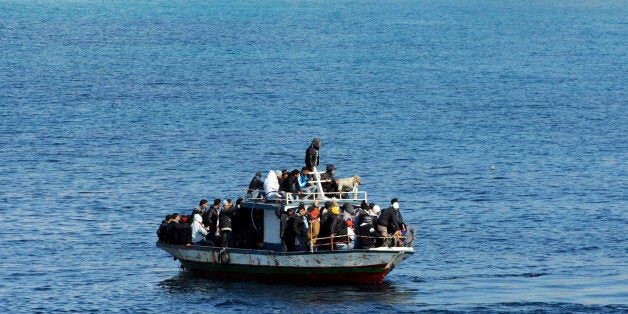
An emergency situation requires an emergency solution. To stop the shipwrecks and the drownings in the Mediterranean (2,500 dead migrants since January), let's put the presumed refugees, or "would-be refugees" as described by the British press, in planes directly to Europe.
In the last 8 months, around 3 out of 4 migrants crossing the Med were asylum seekers. The other quarter was made up of economic migrants searching for jobs. For them, it's another story that I won't address here.
According to the UNHCR (the UN Refugee agency), in 2015 7 migrants out of 10 have been asylum seekers coming principally from 5 countries: Syria, Afghanistan, Erithrea, Somalia, Nigeria.
Consequently one migrant out of two on those death-boats has the right to come to Europe. More importantly, Europe has a duty to protect them. The 1951 Geneva convention protects any "person owing to a well-founded fear of being persecuted for reasons of race, religion, nationality, membership of a particular social group or political opinion". Europe also protects (this principle is called subsidiary or temporary protection) those who would take serious risks if they decide to return to their home country.
Here's the problem: as long as they have not received refugee or protected person status or at the very least an asylum visa, they can not present themselves at airport check-in counters. Despite the fact that a flight would be less expensive and infinitely less risky as demonstrated by the very convincing video made by demographer Hans Rosling (available on YouTube).
The common sense solution is to grant them refugee or protected person status in situ. To do this, one must answer two questions: who grants this status? and whereabouts could it be granted in situ?
A first option: a UNHCR center in Tripoli or elsewhere on the African coast. With the power to grant refugee/protected person status, on behalf of European countries.
A second option: a European union embassy, with the same power, in a few safe countries (which have flights to at least one European country): Algeria? Tunisia? Morocco? Sudan? Djibouti? Kenya? Lebanon? Countries that are safer than the ones the "boat-people" are fleeing from: Erithrea, Syria (for half of them, in 2015). But also: Somalia, Nigeria, Afghanistan, Iraq...
And this must be all be accomplished with great expediency as demanded by this emergency situation. Bear in mind that very few future refugees are currently requesting an asylum visa from say, a French Consulate in Africa -authorizing them to seek asylum or protection in France especially as the French agency for refugees (l'OFPRA) can take between 3 months to 2 years to resolve application requests.
Both options (via the UNHCR or via a European embassy) then require the repartition of the total number of refugees amongst the 28 EU countries.
Two main criteria could be used: population and wealth (GNP per inhabitant) and of course the foreign languages spoken by the refugees.
Another advantage of this on the spot solution: it reduces the large number of rejected asylum seekers in Europe who stay on illegally (around 3 out of 4) and who live in poverty.
For the past 10 years I have interviewed African youths, both boys and girls, on the island of Lampedusa (Italy).
During their journey, theoretically "from the African inferno to the European eldorado", they all have been robbed, assaulted, exploited, some of them tortured, others raped. Without mentioning all those who have drowned.
Why did they take such chances? Abdi, 15, and Sihan, 17, left a situation of total chaos in Somalia. Mohamed, an 18-year-old boy from Erithrea, refused to be chain-ganged for life into the dictator's army. Just like Abel, 16 and Rubel, 17. Gift, 18, from Nigeria, fled Boko Haram. Cynthia, a Nigerian an 18 year-old orphan, was sold by her uncle.
After hearing their stories, I always say to myself: in their shoes, I too I would have fled towards the Mediterranean.
François DufourReporting from Lampedusa since 2005f.dufour@playbac.fr